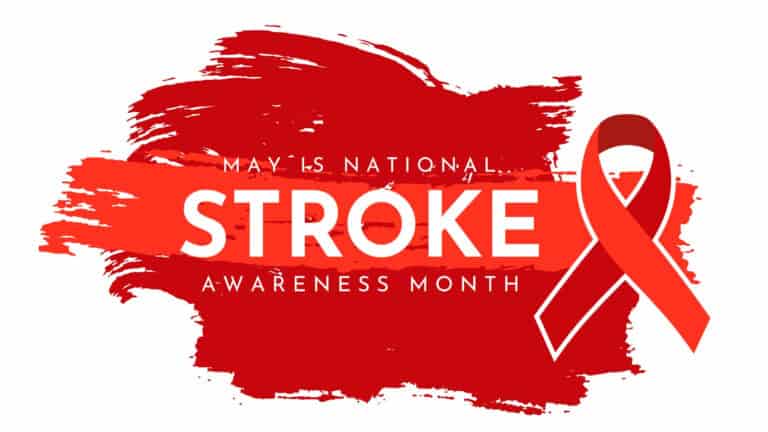National Stroke Awareness Month

It’s National Stroke Awareness Month, and now is a great time to consider what you can do to learn more about this medical condition. By shining a light on the risks of stroke, you can potentially save a life, make better decisions for yourself, and ultimately enjoy many more years of healthy living.
The History Behind This Tradition
Although the earliest reported strokes date back as far as 2000 B.C., it was not until 1599 that the word “stroke” was used to describe this medical event. As the years passed, medical professionals continued to learn more about the condition and steps we can take to minimize the risks of stroke. In May 1989, National Stroke Awareness Month began when President George H. W. Bush signed the Presidential Proclamation 5975. A year later, the term “brain attack” was used to highlight the acute nature of strokes.
What You Can Do to Observe National Stroke Awareness Month
There are several ways to observe National Stroke Awareness Month this coming May, including:
Schedule a checkup: Caring for your own health is one of the best ways to observe National Stroke Awareness Month. Consider scheduling a checkup to make sure your brain is healthy. Your brain controls most of your body’s essential functions, so ensuring it is in good shape is crucial.
Donate to a charity: Find a charity that helps those who have suffered from strokes and donate to one of these important organizations. Doing so could provide essential assistance to people who need help in the community.
Spread awareness: We all have the power to spread awareness about strokes, including their dangers and the preventative measures.
What You Can Do to Prevent a Stroke
Maintaining good health is crucial and can help prevent a stroke. Following these simple tips can reduce the risk of stroke.
Do what you can to lower your blood pressure.
If you smoke, now is the time to stop. Nicotine can raise your blood pressure, which can increase the risk of suffering a stroke.
If you consume alcohol, consider reducing your intake, as the triglycerides in alcohol can increase the risk of two types of strokes.
Exercising can provide many health benefits. Those who live sedentary lifestyles are more prone to obesity, diabetes, high cholesterol, and high blood pressure, all of which increase the risk of a stroke.
Maintaining a healthy diet with many vegetables and fruits can also lower the risk of a stroke. Do your best to avoid saturated fats and excessive salt consumption.
Control your blood pressure by eating a healthy diet and with blood pressure medication if your doctor considers this is appropriate for you.
A key element in maintaining good health is attending regularly scheduled checkups, which is why it is crucial to have a comprehensive health insurance policy. With health insurance coverage, you can have regular checkups, special tests, and treatments for health concerns that could pose a risk of stroke. Reach out to us today to learn more about the health insurance that best suits your situation and your budget.







